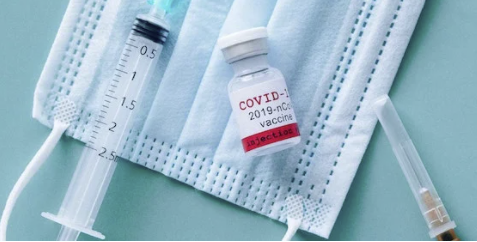Worse than before, but not nearly as bad as before that.
A small but growing share of Houston healthcare workers are calling in sick with COVID, exacerbating long-running staffing issues at some hospitals amid the virus’s resurgence.
But despite spreading infections, medical leaders say the Houston-area healthcare system is managing this wave better than previous bouts with the virus, pointing to better therapeutics and fewer COVID patients requiring critical care.
Anecdotally, doctors say at least half of all COVID patients were admitted for reasons unrelated to the virus. While wastewater data reflects a soaring infection rate, daily new hospitalizations are climbing at a slower pace compared to the record-breaking omicron wave in January and February, according to Texas Medical Center data.
“I don’t anticipate we’re going to have major operational problems” among medical center hospitals, said Dr. James McDeavitt, executive vice president and dean of clinical affairs at Baylor College of Medicine.
The latest Texas Medical Center data, published Tuesday, show hospitalizations have nearly doubled over the last five weeks, from 121 in early June to 240 last week. In January, it took only five weeks for omicron to spark a nearly 600 percent increase in daily COVID hospitalizations, as admissions jumped from 74 to a record 515, according to TMC data.
Meanwhile, the increasing viral load detected in the city’s wastewater — 927 percent higher last week than July 2020 — appears to be as high as ever. Two weeks ago, the viral load was 843 percent of the July 2020 baseline. The citywide positivity rate also saw a slight increase from 29 percent two weeks ago to 31 percent last week, while the positivity rate in the medical center dropped slightly from 16.1 percent to 15.9 percent.
[…]
The number of sick hospital staff members reflects a small portion of the overall workforce at Houston hospitals. On Monday, Houston Methodist reported 402 staff members — 1.4 percent of all employees — had tested positive for COVID. Harris Health System said 245 staff members, or 2.4 percent of its workforce, had tested positive for COVID so far this July, compared to roughly 90 staff members throughout most of June.
Additionally, spokespeople for Memorial Hermann Health System, Texas Children’s Hospital and HCA Houston Healthcare say they are not experiencing major staffing issues or operational interruptions amid the current surge.
“Because of our vaccination and booster requirements, our staffing across hospitals is robust and fully intact,” said Dr. James Versalovic, chief pathologist at Texas Children’s Hospital. “I’m happy to say, we have prepared ourselves for this moment.”
More than two years into the pandemic, medical leaders now greet surges with more nuanced messaging, showing concern over rising infections and staffing struggles while assuring the public that hospitals are now better equipped to withstand rising infections.
Versalovic noted that Texas Children’s has seen its COVID population double over the last month. The 7-day rolling average of pediatric COVID patients is now more than 50 in the hospital system. He urged parents to seek out vaccinations as the start of school closes in.
On the one hand, this is basically good news. The hospitals are able to function without being overburdened, our overall vaccination level (and the good luck that this variant, however more contagious it is, isn’t particularly devastating) is helping keep levels in check, and while we’re worse off than we were a couple of months ago we’re much better off than we were in previous waves. One could argue that this is more or less what “endemic” looks like.
On the other hand, Stace is right. We’ve basically given up on trying to keep a lid on this thing – to be sure, there’s far less that governments can do now, thanks to a bunch of wingnut court rulings and Greg Abbott executive orders, but there are plenty of things we could be doing that we aren’t. A lot of leaders who should know better aren’t setting good examples. Even a milder form of COVID is potentially deadly to people with various comorbidities and risk factors, or who are immunocompromised in some way. Just having people mask up again as a matter of course would make all of their lives better, but we’re not doing that.
I’m definitely masking in indoor spaces again, but I’m also willing to be in indoor spaces, and to be among groups of people. I’ve mitigated some of my risk, but I’m engaging in riskier behavior than I had been before. It’s one part denial, one part pandemic fatigue, one part the perhaps naive hope that there will be another booster coming soon, and one part hoping that I’m being cautious enough. I don’t know what happens next if things do get worse from here. I very much hope I don’t have to find out.

